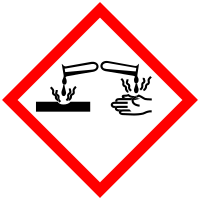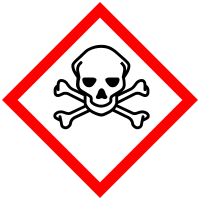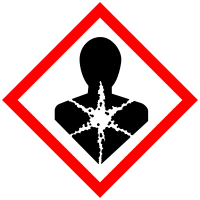
Improving Member States preparedness to face an HNS pollution of the Marine System (HNS-MS)
Phenol
Description Top
| CAS number | 108-95-2 |
| UN number | 1671 |
| Chemical formula | C6H6O |
| Accident occurred | Yes |
| Standard European Behaviour Classification (SEBC) | Sinker (S) |
GESAMP Hazard profile
| A1 | A2 | B1 | B2 | C1 | C2 | C3 | D1 | D2 | D3 | E1 | E2 | E3 |
| 2 | R | 3 | 0 | 2 | 2 | 3 | 3 | 3 | NT | S | 3 |
Marine pollution Classification (MARPOL Annex II)
| Category | Description |
| Y | Noxious Liquid Substances which, if discharged into the sea from tank cleaning or deballasting operations, are deemed to present a hazard to either marine resources or human health or cause harm to amenities or other legitimate uses of the sea and therefore justify a limitation on the quality and quantity of the discharge into the marine environment. |
Alternate names for this chemical
Carbolic Acid
Hydroxybenzene
Monohydroxybenzene
Oxybenzene
Phenic Acid
Phenyl Alcohol
Phenylic Acid
Phenylic Alcohol
Phenyl Hydrate
Phenyl Hydroxide
Acide Carbolique
Phenol
Hydroxybenzene
Monohydroxybenzene
Oxybenzene
Phenic Acid
Phenyl Alcohol
Phenylic Acid
Phenylic Alcohol
Phenyl Hydrate
Phenyl Hydroxide
Acide Carbolique
Phenol
Physico-chemical properties Top
| Chemical formula | C6H6O | ||
| Molar mass | 94.11 [g/mol] | ||
| State | Solid at 25°C and 1 atm | ||
| Fusion temperature | 43 [°C] | ||
| Boiling temperature | 181.8 [°C] | ||
| Density |
|
||
| Kinematic viscosity |
|
||
| Hydrosolubility |
|
||
| Vapour pressure |
|
||
| Vapour density | 2.6 | ||
| Flash point (Pensky-Martens closed cup) | 79 [°C] | ||
| Flash point (Cleveland open cup) | 85 [°C] | ||
| Lower explosivity limit (LEL) | 1.7 [%] | ||
| Upper explosivity limit (UEL) | 8.6 [%] | ||
| Vaporization enthalpy |
|
||
| Combustion enthalpy | 31000000 [J/Kg] | ||
| Specific heat capacity | 2123 [J/(Kg·K)] | ||
| Combustion efficiency | 89 [%] | ||
| Mass flow rate of the combustion surface | 0.04 [Kg/(m²·s)] | ||
| Radiative fraction | 33 [%] | ||
| Henry's constant | 0.02 [mol/(m³·Pa)] |
Behaviour Top
| Log Kow | 1.47 |
| Log Koc | 1.59 |
| Hydrolysis (Half-life) | Not hydrolysable |
| Aqueous photolysis (Half-life) | Not photolysable |
| Biodegradation in estuary environment (Half-life) | 15 days |
| Biodegradation in marine environment (Half-life) | 50 days |
| Standard European Behaviour Classification (SEBC) | Sinker (S) |
| Bioconcentration factor (BCF) | 17.5 |
Ecotoxicity Top
| Lowest median lethal concentration (LC50) on algae | 49.6 [mg/l] | ||
| Lowest median lethal concentration (LC50) on crustacean | 3.1 [mg/l] | ||
| Lowest median lethal concentration (LC50) on fishes | 5 [mg/l] | ||
| Highest no observed effect concentration (NOEC) on algae | 13 [mg/l] | ||
| Highest no observed effect concentration (NOEC) on crustacean | 0.46 [mg/l] | ||
| Highest no observed effect concentration (NOEC) on fishes | 0.077 [mg/l] | ||
| Assessment factor (AF) |
|
||
| Predicted No Effect Concentration (PNEC) |
|
Hazards Top



Danger
| IDLH | 250 [ppm] |
Hazards statements
Health
H301
Toxic if swallowed.
H311
Toxic in contact with skin.
H314
Causes severe skin burns and eye damage.
H331
Toxic if inhaled.
H341
Suspected of causing genetic defects.
H373
May cause damage to organs through prolonged or repeated exposure, exposure cause the hazard:
Precautionary statements
Prevention
P201
Obtain special instructions before use.
P261
Avoid breathing dust/fume/gas/mist/vapours/spray.
P280
Wear protective gloves/protective clothing/eye protection/face protection.
Response
P331
Do NOT induce vomiting.
P301 + P310
IF SWALLOWED: Immediately call a POISON CENTER or doctor/physician.
P303 + P361 + P353
IF ON SKIN (or hair): Remove/Take off immediately all contaminated clothing. Rinse skin with water/shower.
P305 + P351 + P338
IF IN EYES: Rinse cautiously with water for several minutes. Remove contact lenses, if present and easy to do. Continue rinsing.
P308 + P313
IF exposed or concerned: Get medical advice/attention.
GESAMP Top
GESAMP Hazard profile
| A1 | A2 | B1 | B2 | C1 | C2 | C3 | D1 | D2 | D3 | E1 | E2 | E3 |
| 2 | R | 3 | 0 | 2 | 2 | 3 | 3 | 3 | NT | S | 3 |
A1: Bioaccumulation
| Rating | Description |
| 2 | Low potential to bioaccumulate |
A1a:
| Rating | Description | Criteria [mg/l] |
| 1 | Very low potential to bioaccumulate | 1 ≤ Log Kow < 2 |
A1b:
| Rating | Description | Criteria |
| 2 | Low potential to bioaccumulate | 10 ≤ BCF < 100 |
A2: Biodegradation
| Rating | Description |
| R | Readily biodegradable |
B1: Acute aquatic toxicity
| Rating | Description | Criteria [mg/l] |
| 3 | Moderately toxic | 1 < LC/EC/IC50 ≤ 10 |
B2: Chronic aquatic toxicity
| Rating | Description | Criteria [mg/l] |
| 0 | Negligible | NOEC > 1 |
C1: Acute oral toxicity
| Rating | Description | Criteria [mg/Kg] |
| 2 | Moderate | 50 < AOTE ≤ 300 |
C2: Acute dermal toxicity (skin contact)
| Rating | Description | Criteria [mg/Kg] |
| 2 | Moderate | 200 < ADTE ≤ 1000 |
C3: Acute inhalation toxicity
| Rating | Description | Criteria [mg/l] (4 hours exposure) |
| 3 | Moderately high | 0.5 < AITE ≤ 2 |
D1: Skin irritation or corrosion
| Rating | Description | Sign | GHS category |
| 3 | Severely irritating or corrosive | Severe irritation indi | Corrosive Category 1 |
D2: Eye irritation
| Rating | Description | Sign | GHS category |
| 3 | Severely irritating or corrosive | Severe conjunctoblepha | Irritant Category 1 |
D3: Long-term health effects
| Notation | Hazard endpoint | Description | GHS category |
| No Information |
E1: Tainting of seafood
| Rating | Description |
| NT | The substance has been tested for tainting and found not to taint following exposure of the fish for 24h to 1mg/l. |
E2: Behaviour of chemicals in the marine environment
| Rating | Description |
| S | Sinker |
E3: Interference with the use of coastal amenities
| Rating | Interference | Description | Interpretation | Warning |
| 3 | Highly objectionable | 1 is highly acutely toxic; and/or 2 is severely irritant or corrosive to skin or eyes; and/or 3 is carcinogenic, mutagenic or reprotoxic; and/or 4 is a floater or persistent floater with associated health effects | 1 C1 and/or C2 and/or C3 = 4; and/or 2 D1 or D2 = 3, 3A, 3B, or 3C; and/or 3 D3 contains C, M or R; and/or 4 E2 = F or Fp and D3 contains Ss, Sr, T, A, N, or I | Warning issued leading to the closure of amenities |
GHS Security Information



Danger
About the project
HNS-MS is a decision-support tool that Belgian and French maritime authorities as well as coastguard stations can activate in order to forecast the drift, fate and behavior of acute marine pollution by Harmful Noxious Substances (HNS) accidentally released in the marine system.
Contact us
Copyright © 2015–2025 HNS-MS Consortium
 HNS-MS has been funded by DG-ECHO under agreement ECHO/SUB/2014/693705 and runs from 1 January 2015 to 31 March 2017.
HNS-MS has been funded by DG-ECHO under agreement ECHO/SUB/2014/693705 and runs from 1 January 2015 to 31 March 2017.